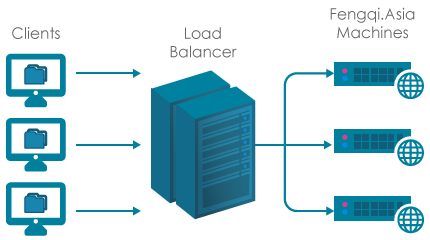
Load Balancer automatically distributes incoming application traffic across your selected Fengqi.Asia machines. It enables you to achieve greater levels of fault tolerance in your application.
This means that the processing load can be shared across many nodes, rather than being limited to a single server, and increasing performance during times of high activity. It also increases the reliability of your web application and allows you to build your application with redundancy. If one of your server nodes fails, the traffic is distributed to your other nodes without any interruption of service.
Why Use Load Balancer
Load balancer is a solution for more than one problem. You can use load balancing to keep your site up through traffic spikes, or grow with your site as it gains popularity. The two most common uses for Load Balancer:
Limiting your points of failure
By limiting your available points of failure, you increase your uptime. If you load balance between two or more identical nodes, in the event that one of the nodes in your cluster experiences any kind of hardware or software failure, the traffic can be automatically redistributed to the other node keeping your site up.
Growing beyond a single server configuration
As your site gains popularity, it will outgrow the power of even the most robust servers, and require something stronger than a single server configuration. The easy step to take is to combine the power of multiple servers with Load Balancing.
Benefits
Features
Fengqi Asia
Cloud Hosting
Sales Hotline
Hong Kong:
+852 2655 6165
Mainland China:
+86 400 810 8832
General Enquiry
cloud@fengqi.asia
 Hong Kong
Hong Kong Beijing
Beijing

























